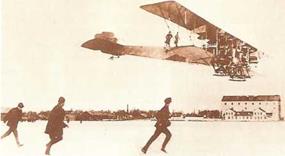The People’s Airline
Aeroflot traces its direct ancestry back to 1923, but its mission began in 1930, with the proclamation of the first Soviet Five Year Plan, which, among other objectives, charged the airline with providing an air service for all the people, an obligation as essential as public housing, public utilities, or an urban subway system. Profit-making was irrelevant. Aeroflot received its aircraft, fuel, airport facilities, and ground services from the State; and in return it performed a public service for the State.
Business travel no longer existed as there were no private businesses. First-class service was therefore not required. Indeed, it was politically undesirable, although senior officials usually received preferential treatment. As Aeroflot grew, it was able to offer extremely cheap travel to tens of millions of Soviet people, in the equivalent of America’s Greyhound Bus, and just as affordable for the ordinary citizen.
Such a true People’s Airline, with fares set low, with passengers paying only for the transport, not for meals and amenities, has been alien to the minds of many western commentators. In the West, air travel was at first the privilege of the rich, with very high fares, and only filtered down to economy-class and group travel levels in later years. In the Soviet Union, the reverse was the case. Only when the airline expanded its horizons into the western world, mainly during the past three decades, did it need to cope with first-class cabin standards. But the people’s airbus service, for politicians and peasants alike, Aeroflot has done its job superbly.
Aeroflot Director-Generals
1930-33 B. l. Baranov 1957-59 P. F. Shigarev 1933-35 I. S. Unshlikht 1959-70 Ye. F. Loginov 1935-38 I. F. Tkachev 1970-87 B. P. Bugaev 1938-42 V. S. Molokov 1987-90 A. N. Volkov
1942-47 F. A. Astakhov 1990-91 B. Ye. Paniokov
1947.49 G. F. Baidukov 1991-92 A. A. Larin 1949-57 S. F. Zhavaronkov
 |
 Igor Sikorsky — Aviation Genius
Igor Sikorsky — Aviation Genius
For many years during the early development of the commercial airliner, little notice was taken of, or little credit given to, the remarkable achievements of the Russian designer, Igor Sikorsky. Less than ten years after the historic flight of the Wright brothers on 17 December 1903, and while designers in other countries were still dabbling with single-engined light aircraft, Sikorsky built a multi-engined giant that began to carry respectable loads of passengers, in acceptable comfort, on demonstrations and test flights over the city of St Petersburg.
Born in Kiev in 1889, Sikorsky was the son of a professor at the Imperial University of St Vladimir, and was fortunate in being able to study at Kiev Polytechnic Institute and also in Paris. He quickly embraced the science of aeronautics, then in its embryo stage and, early in 1912, was able to propose the idea of a multi-engined aircraft to Mikhail Shidlovsky, chairman of the Russo-Baltic Wagon Company at St Petersburg. Sikorsky advocated more than one engine because of the notorious unreliability of power plants at that time. Shidlovsky was impressed, and authorized construction of the world’s first four-engined aircraft on 30 August 1912.










